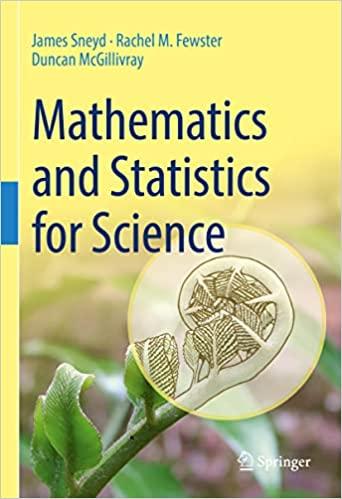As we saw in Exercise 40.19, the half-life of a radioactive substance is the time taken for
Question:
As we saw in Exercise 40.19, the half-life of a radioactive substance is the time taken for half of its atoms to decay. If atoms decay according to an exponential distribution with rate
λ per unit time, then the half-life can be calculated from t1/2 =
− ln(0.5)
λ
.
In this question we’ll use our methodology for estimating λ to find an estimator for the half-life, t1/2. We’ll also investigate the properties of our estimator, and work out how to calculate a confidence interval.
Suppose we observe k atomic decay times. The mean of the k observations is X.
a. What is the maximum likelihood estimator of the decay rate, λ?
b. Using your answer to (a), suggest a suitable estimator for the half-life. Call your estimatorbt1/2.
c. Find the mean and variance of your estimator bt1/2. Is it unbiased?
Since λb is an MLE, your estimator bt1/2 is also an MLE. This is because we could reparametrise the likelihood in terms of t1/2 instead of λ, and the likelihood peak would still be in the same place.
d. In our experiment on Carbon-15 in Section 40.4.1, we observed k = 50 decay times and obtained a sample mean of x = 3.36. Write down your estimate of the half-life of Carbon-15, and suggest a confidence interval. (Hint: your half-life estimator is an MLE, so you can use the usual calculation of estimate ±2se for your confidence interval.)
Step by Step Answer:

Mathematics And Statistics For Science
ISBN: 9783031053177
1st Edition
Authors: James Sneyd, Rachel M. Fewster, Duncan McGillivray






